Do you have a Koi pond in your backyard with some fish swimming in it? If so, I like you already, and I’d love to tell you all about the advantages of Koi pond bacteria and how to foster the growth of beneficial bacteria.
Beneficial bacteria are a completely natural and eco-friendly way to remove pond algae and pond scum. We can add this type of bacteria to pond water once the water’s temperature is at least 55 °F. We'll need to add this bacteria to our pond every one or two weeks.
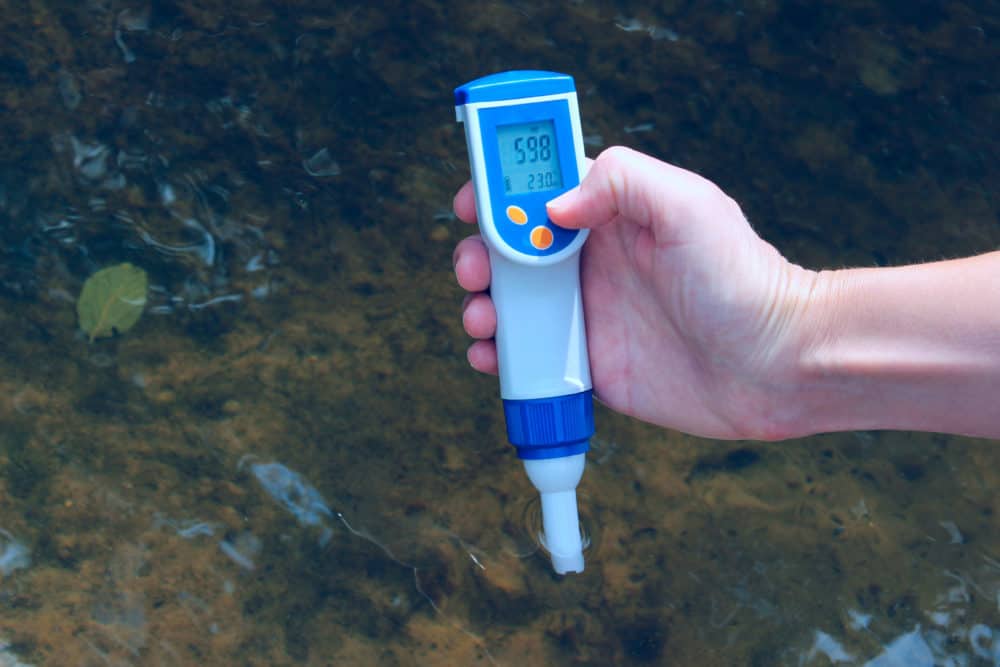
While I might not be an expert on the subject of Koi pond bacteria, I am a pond hobbyist and own my own pond at my home. I perform plenty of research on pond maintenance to learn how to best take care of my pond fish and keep the water clean of algae.
In this guide, I will explain the following factors:
Ponds have tons of microorganisms known as aerobic bacteria. This means the bacteria thrive in an oxygenated or aerobic environment. These bacteria turn harmful matter into something less damaging to our health. For example, beneficial pond bacteria can turn ammonia into nitrates, which are organic waste materials.
Remember as a child how they used to tell us bacteria made us sick, well they were all liars, not liars but, bacteria can be helpful sometimes.
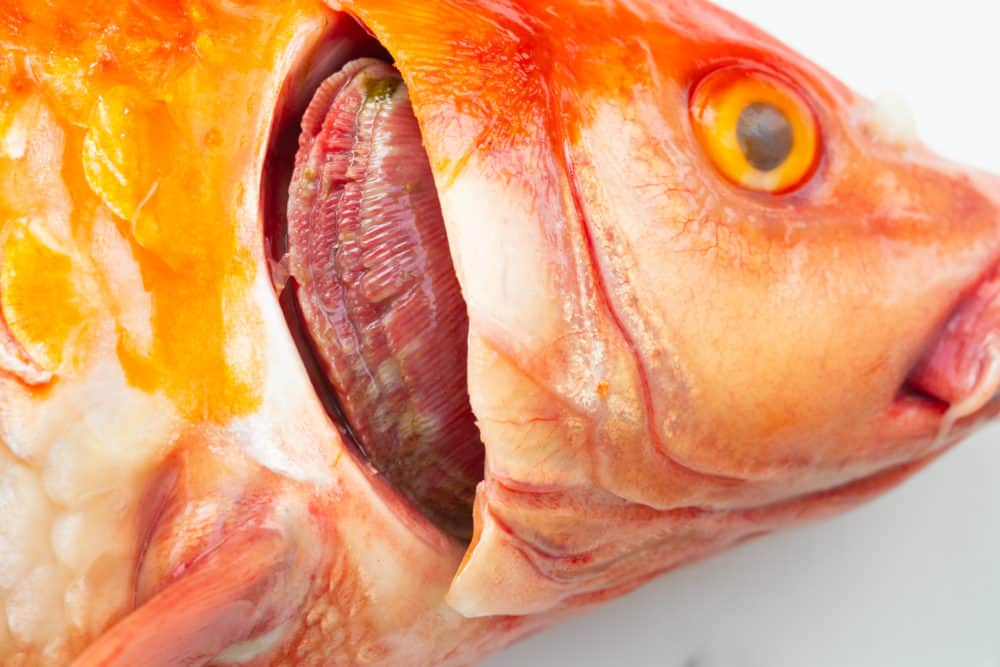
This entire process is known as the nitrogen cycle. This cycle takes place in all ponds naturally and won’t require anyone to add more commercial bacteria additives. The second we add water into the pond, beneficial bacteria will begin growing.
The bacteria will multiply over time as our pond gains more fish and as other creatures visit it. In particular, beneficial bacteria tend to grow around the filter media of the garden pond.
Bacteria end up setting up a home to live in within the biologically optimized media. They benefit the pond by breaking down damaging materials found on the surface of the media. Most of the breakdown of harmful substances takes place in the highly concentrated filter media.
We will find that a Koi pond may lose its fair share of beneficial bacteria at certain points. It may especially be more problematic when we first build our pond and add our fish. It takes time for bacteria to grow, so adding more at the beginning of setting up our pond may be a good idea, if not a great idea.
If we have Koi fish or goldfish living in our pond, we may want to get beneficial bacteria supplements. It will keep our pond water clean and remove harmful substances from the water.
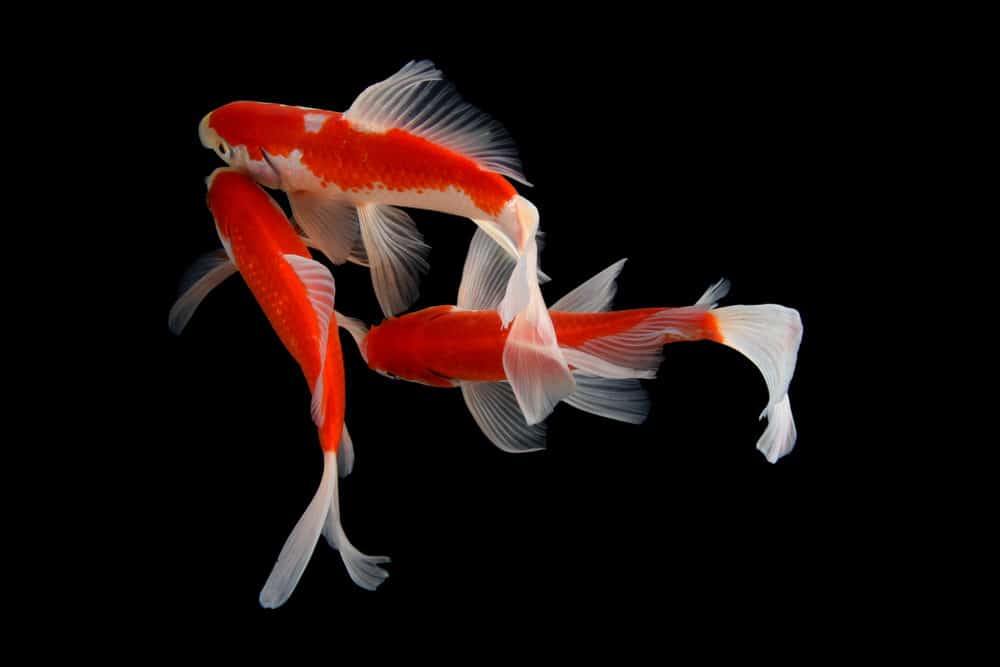
There’s no such thing as too much beneficial bacteria. As such, it won’t hurt our pond whatsoever to add more beneficial bacteria supplements.
Our pond will only be more likely to be clean and free of harmful materials. Think of it as bathing in thermal waters, who wouldn’t want that?
There are tons of advantages that a Koi pond will gain after one adds beneficial pond bacteria. Some of the pros of adding beneficial pond bacteria to a Koi pond are:
In addition, beneficial bacteria can become a source of food for zooplankton and benthos found in ponds. Once the zooplankton grows, it will become another food source for our goldfish and Koi fish.
The beneficial bacteria remove the phosphorus and nitrogen from the pond, which are necessary substances for the creation of algae. Without phosphorus and nitrogen around, nothing can form algae.
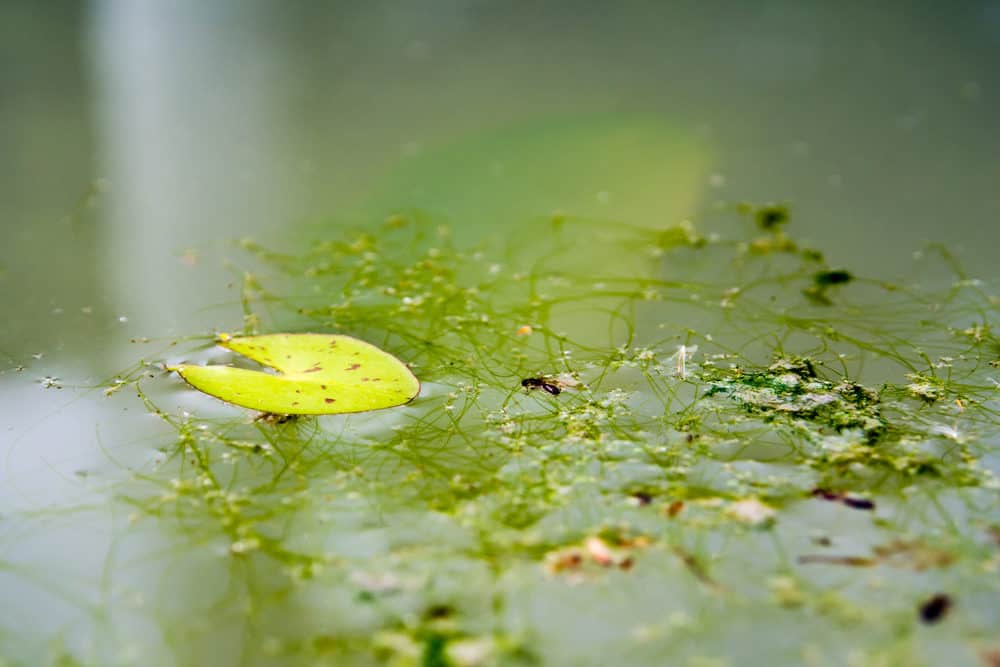
The biggest benefits of beneficial pond bacteria include enhanced water quality and the degradation of organic waste.
A combination of enzymes and beneficial bacteria can also digest organic materials found on the bottom of our backyard pond. This includes any naughty stuff our fish might have done and is known as biological dredging.
We'll find that beneficial bacteria can reduce the amount of organic bottom sludge, which will make our pond deeper.
If we find that leaves and sticks from our oak trees fall into our pond, we can either remove them or wait for the beneficial bacteria to degrade the cellulose found in those leaves. Aerobic bacteria can even keep the pH of the water from fluctuating greatly.
Another tip to consider to gain the biggest benefits from Koi pond bacteria is to perform pond aeration. Aerobic bacteria will work better when dissolved oxygen levels are high, so I suggest getting an aerator or a floating fountain to improve the quality of our pond water. Come on, if a floating fountain is something that can be bought, we know we ought to.
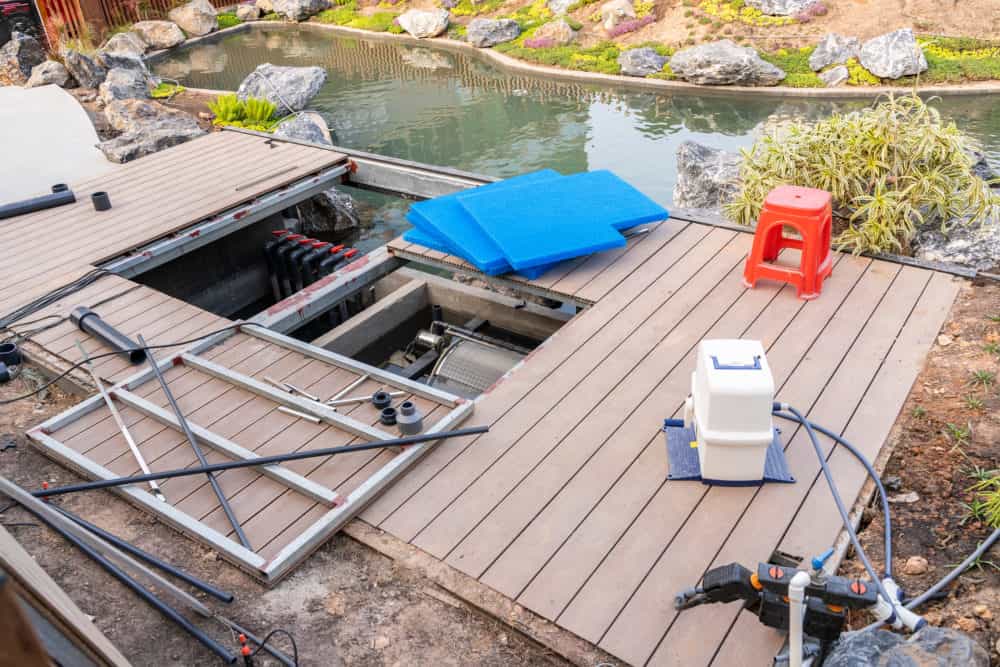
We will find that beneficial bacteria also reduces the need for filter maintenance and helps our filter run more efficiently. It will also greatly benefit a newly built pond that does not have a full bacterial ecosystem established yet.
Our water garden pond will also be much more clear and looking bright and shiny due to the beneficial bacteria. We won’t have any problems with cloudy water.
While there are many benefits to adding beneficial pond bacteria to a Koi pond, there are also some disadvantages, which I discuss below.
Some resources state that beneficial pond bacteria may not actually reduce the number of algae present in the water as much as we’d think. So, a potential con of adding beneficial bacteria to a Koi pond is that it may not remove all the algae present in the pond water.
When too many bad algae forms in our pond, there won’t be enough sunshine making it through the water to provide photosynthesis and nutrients to zooplankton. So a food shortage may arise, not good at all.
There will also be a lack of oxygen, which may lead to the growth of “bad” anaerobic bacteria. An anaerobic bacterium is often known as a pathogenic bacterium or a disease-causing one, such as E. coli or Aeromonas. When anaerobic bacteria is formed, it could lead the marine life in a Koi pond (i.e., Koi fish) to die off.

As such, it is a good idea to remove as many algae as possible from a pond by hand before adding beneficial bacteria to the water. A UV clarifier can be a great purchase, as we can use it to remove the green algae water and provide us with a clearer pond.
Other sources claim that purchasing beneficial pond bacteria supplements is a complete waste of time and money. Their reasoning is that beneficial bacteria already grow naturally in any pond. The argument is that there are tons of bacterial species that would provide the same benefits already present in our Koi pond.
However, there may be times when the amount of bacteria in a pond is low, as the bacteria first multiplies, grows, and consumes nutrients.
As the number of nutrients declines due to this consumption, fewer bacteria can be supported and many die off. This can lead to lower numbers of bacteria in the pond water.
It is also important to note that beneficial bacteria will be dormant during the winter and will not divide or grow when the water temperature is below 50 °F.
When the amount of aerobic bacteria has declined or stopped growing due to cooler temperatures, we may want to add more beneficial bacteria in the Spring when temperatures get warmer to give it a running start on clearing harmful substances from the water.
See, even bacteria love spring.

There are multiple steps we can follow to grow beneficial Koi pond bacteria naturally. These steps include:
Along with these steps, we’ll need to keep a few things in mind. We want to avoid using too much fertilizer or chemicals, as these can actually harm the development of beneficial bacteria and may harm the health of our Koi fish or goldfish.

I especially advise that we avoid copper products, as these are known to kill beneficial bacteria. If there have been serious water transformations in our pond, then it is essential to dechlorinate the mains water. This will stop the growth of pathogenic slime bacteria.
Beneficial bacteria won’t be able to decompose the organic matter if there is too much of it in the water. As such, it is important to remove the leaves, dead bugs, bits of grass, and sticks out of the Koi pond.
The bottom line is that it is important to be able to differentiate between beneficial and harmful bacteria and the multitude of ways to maintain healthy pond water for your koi fish. Essential nutrients, proper water temperature, algae and fish waste control and the absence of too many chemicals or fertilizers should all be kept in mind when determining the health and well being of your backyard pond when it comes to whether the added bacteria will benefit fish health or cause bacterial infection.



